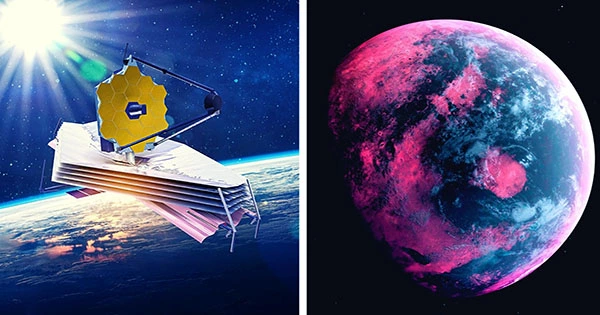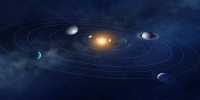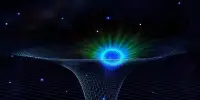The first exoplanet image from the JWST has been released by astronomers, and it shows a pretty strange world. According to reports, the groundbreaking telescope performed by a factor of 10 better than predicted. Now that it has been shown it can directly see exoplanets, it has already shown it can analyze the atmospheres of exoplanets as they pass in front of their sun.
HIP 65426b is the name of the world in question, and it is incredibly mysterious. Observations of it are essential to aid astronomers in improving their models because previous statements stated that it shouldn’t exist because it doesn’t suit our models of exoplanets (planets outside the Solar System).
First of all, it revolves around a young star that spins extremely quickly and has a mass twice that of the Sun. Compared to our Sun’s 28-day rotation, it completes in just over three hours. It is 150 times quicker. Furthermore, despite being a star between 15 and 20 million years old, it lacks a disk that planets may develop in. That’s only the beginning of the mystery.
HIP 65426b is situated 92 AU (astronomical units) away from its star, where 1 AU is the distance between the Earth and the Sun. Neptune is three times closer to the sun than that. The planet is heated, with a temperature of roughly 1,000°C (1,800°F), and is now thought to weigh about seven times as much as Jupiter.
The planet may have formed with siblings closer to the star, quickly causing the disk to vanish, and then through a gravitational tug-of-war, it ended up here and the siblings were lost. Alternatively, the star and the planet may have formed together, with the star hoarding the majority of the material, preventing the planet from growing any larger and developing into a brown dwarf or star.
The AAS journal has accepted an article on this first-ever photograph of an exoplanet from JWST, and it is currently accessible on the internet repository ArXiv. The planet is between 1,000 (near infrared) and 100 (mid-infrared) times fainter than its star in the infrared, the wavelength that JWST uses. The fact that the telescope can see it so well is therefore amazing.
Even though this study cannot provide a conclusive explanation for the creation of this strange planet, it does demonstrate the value of the JWST in the field of exoplanet research. The researchers thinks a planet smaller than Saturn and with a similar orbit should be visible to the space telescope, given the correct star.














